Heritage Frederick’s exhibit Stitches Through Time: Women’s Work from Farm to Fashion explores the history of textile production in Frederick County. One facet of this story is the local garment industry which emerged in the late-nineteenth century and grew to include factories producing menswear, dresses, shirts, hosiery, and other articles of clothing. While many of these factories were concentrated in Frederick City, garment factories were found in communities across the county as well, such as the town of Thurmont.
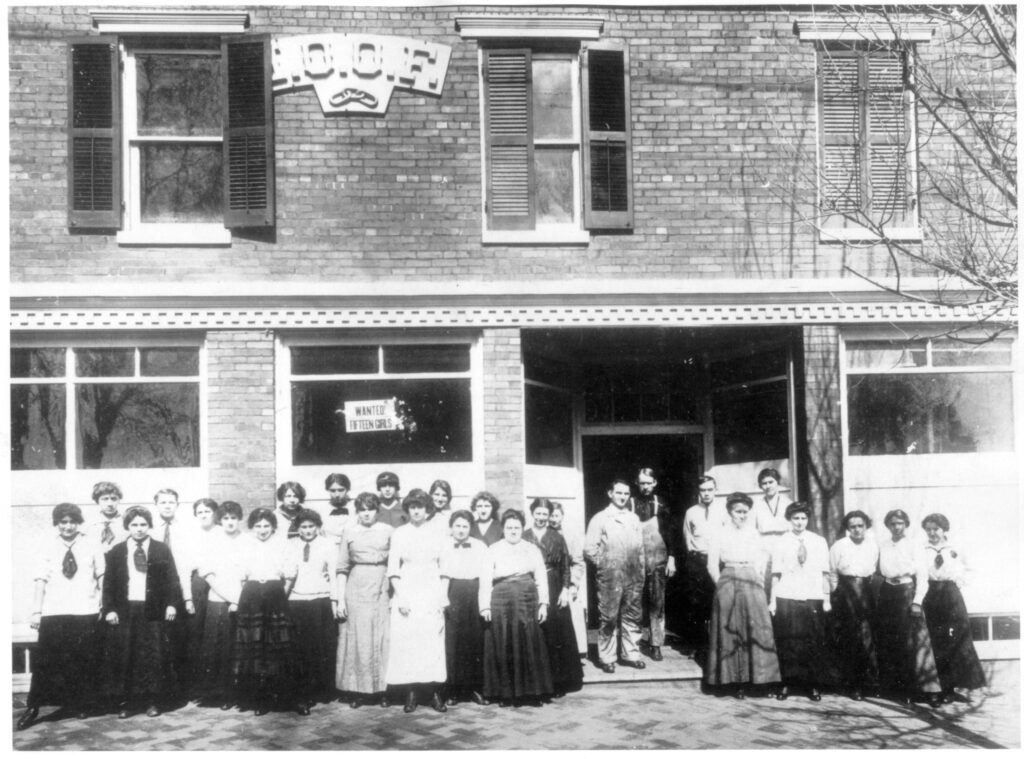
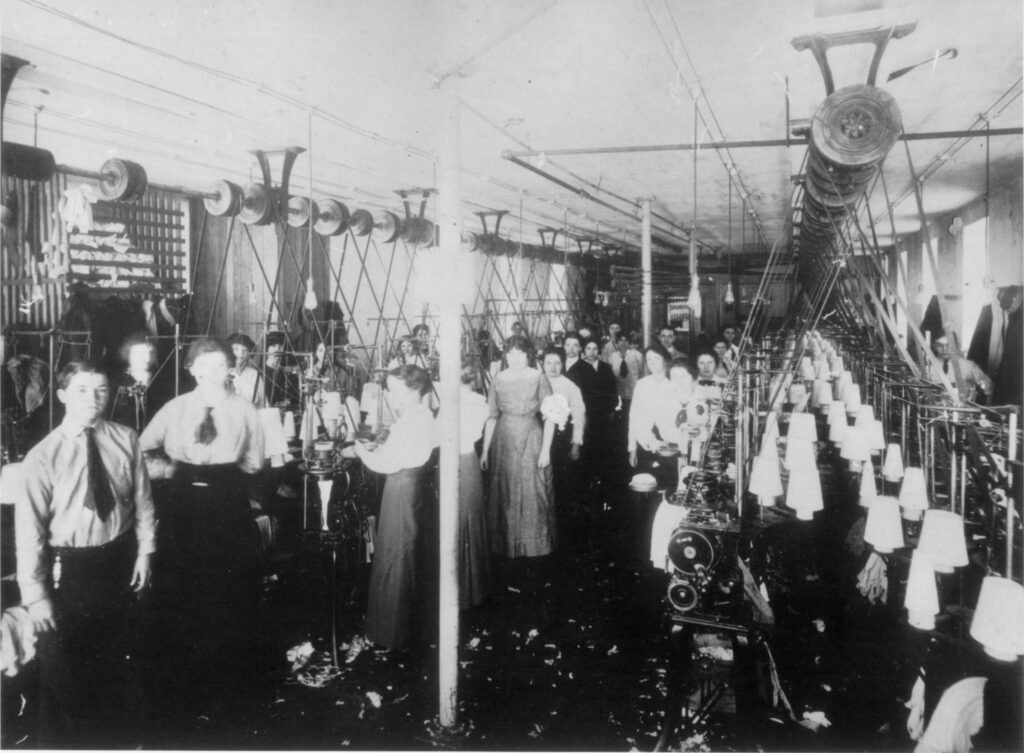
Employees of the Thurmont Branch Factory of Union Manufacturing Company in 1911 (Courtesy of Thurmont Images).
The Union Manufacturing Company of Frederick opened a branch factory in Thurmont in the fall of 1911. Twenty knitting machines were installed in a space on the first floor of the Odd Fellow’s Hall on Main Street. Union Manufacturing Company produced hosiery from silk, wool, cotton, rayon, and eventually, nylon. The Thurmont Branch Factory quickly outgrew its space in the Odd Fellows Hall and was moved to an old school building in town. During World War I, Union Manufacturing Company employees produced woolen stockings for the United States Army at its Thurmont Branch as well as a second branch factory in Emmitsburg and the main knitting mills in Frederick City.
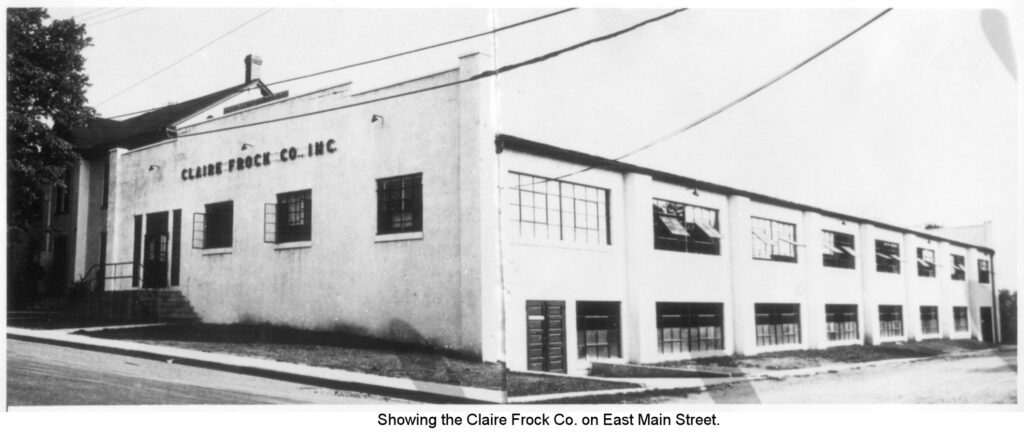
Claire Frock Company’s first factory building on East Main Street (Courtesy of Thurmont Images)
A second garment factory in Thurmont was established in 1935 by A. Jules Bernstein of York, Pennsylvania. The Claire Frock Company began operations in a factory on East Main Street producing cotton dresses. By 1950, the plant employed 125 people and added spaces for sewing, packaging, and shipping to its facility. In the 1960s, the company constructed a second manufacturing facility on the northeast side of Thurmont. By this time, Claire Frock was producing women’s casual and athletic clothing that was distributed across the United States through department store chains like J.C. Penney and Sears and Roebuck. The company was one of Frederick County’s largest employers.
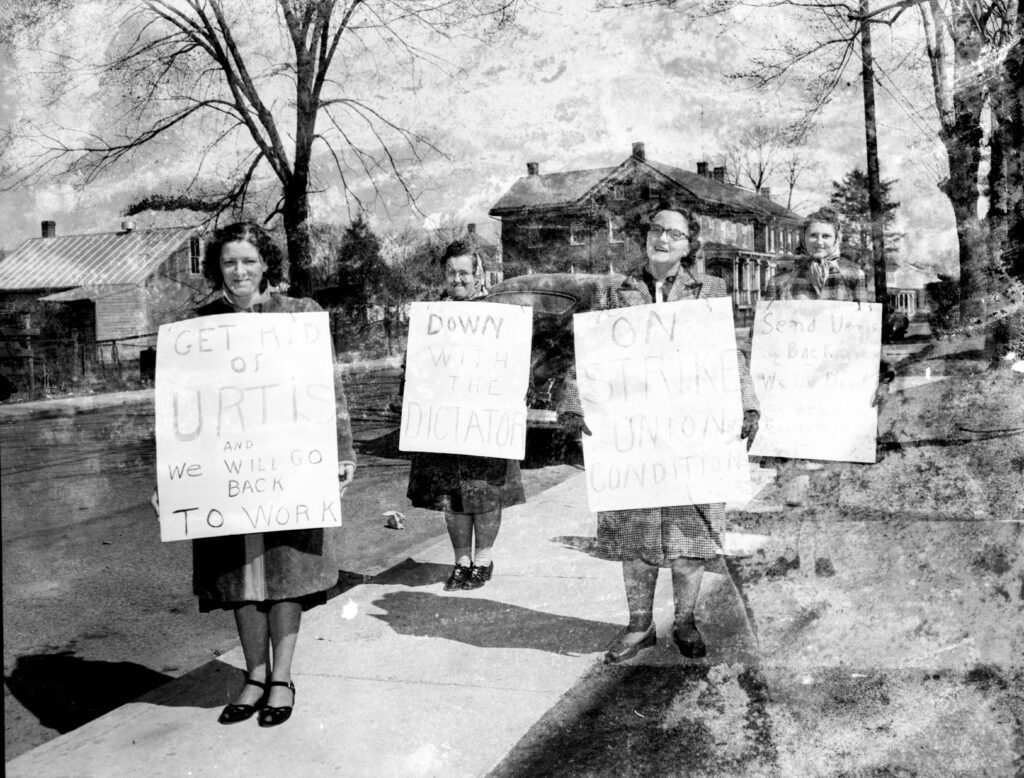
Claire Frock Company employees on strike in April 1950 (Courtesy of Thurmont Images)
While employees of Claire Frock held the factory and its owners in high regard, there were challenges to that harmony throughout the company’s history. In 1949, the employees organized with the International Ladies Garment Workers Union (ILGWU). A year later, several employees approached the management with complaints that wages and benefits were not in accordance with the agreement between the union and Claire Frock. When one of these employees was fired, the factory workers went on strike in April 1950. A picket line formed along East Main Street in front of the original Claire Frock factory building. After a week of picketing, attorneys for the Claire Frock Company and the ILGWU reached an agreement and work resumed.

Claire Frock Company’s East Poplar Street facility in 1972.
In 1974, Claire Frock founder A. Jules Bernstein retired and Calvin E. Sayler succeeded him as president of the company. Sayler began working at Claire Frock Company as a shipping clerk in 1958. Garment production, like many other forms of manufacturing industry in the United States, became increasingly globalized in the latter half of the twentieth century. In an effort to keep Claire Frock operating as part of a larger chain of factories, Sayler sold the company to I. A. Appel Company of New York in December 1986.
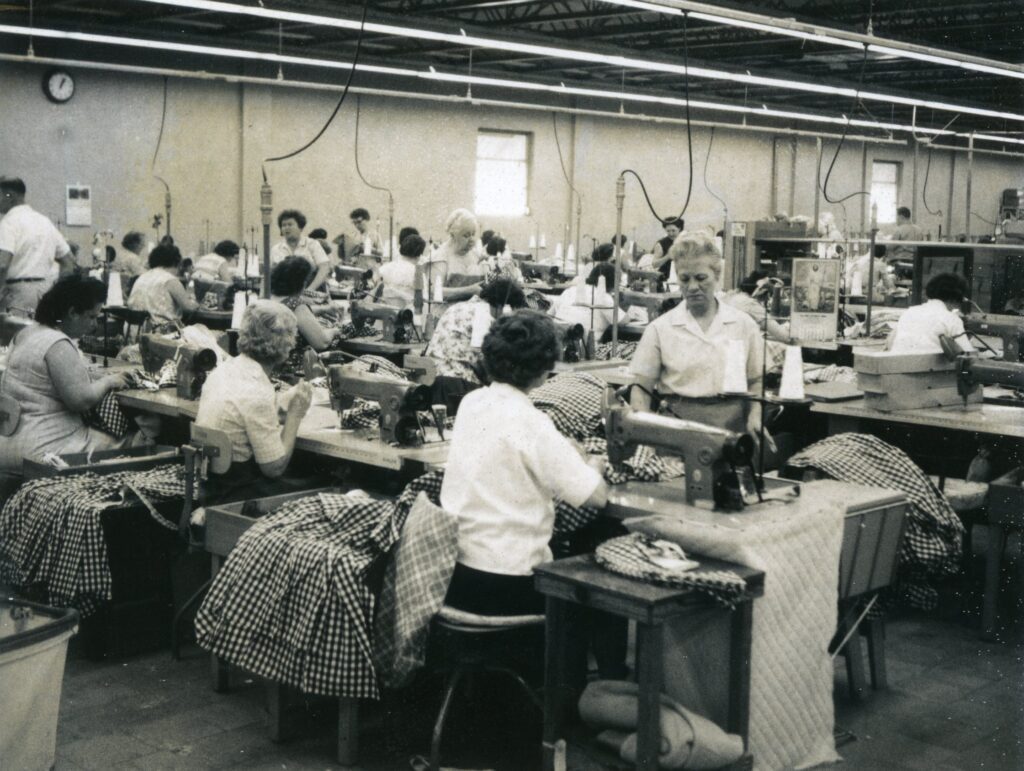
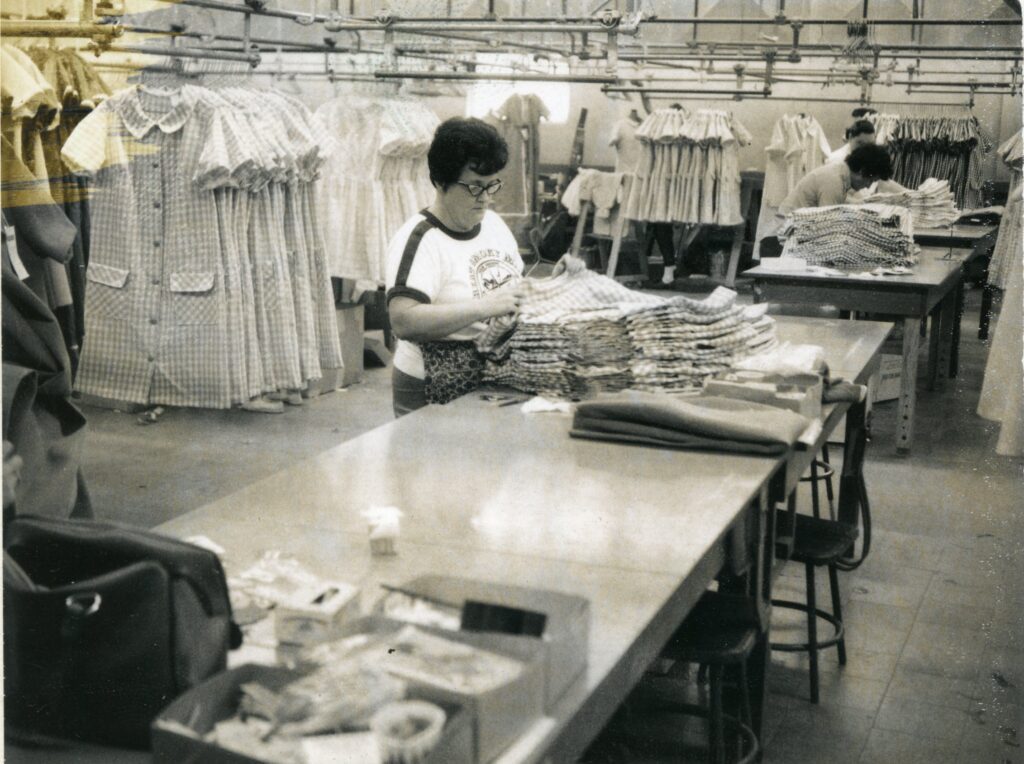
Workers inside the Claire Frock Factory in the mid-1970s.
Soon after the acquisition of Claire Frock by I.A. Appel, employees’ hours and wages were cut back and the company ceased pension payments. On April 6, 1987, Claire Frock employees went on strike. A federal mediator was appointed three weeks later to begin negotiating an agreement, by which time the strike had grown to I.A. Appel factories in Tennessee and New York. The strike continued for six months until the union leaders acquiesced and accepted an agreement following short of the workers’ original demands that their wages and benefits be restored to the levels they were prior to the I.A. Appel’s acquisition of Claire Frock. Within two years, I.A. Appel announced that the Thurmont factory would cease operations. There were 175 employees of the former Claire Frock Company who were left unemployed when the factory closed in June 1990.
The closure of Claire Frock Company brought an end to over 80 years of industrial garment production in the town of Thurmont.
October 2, 2023 by Jody Brumage, Heritage Frederick Archivist
